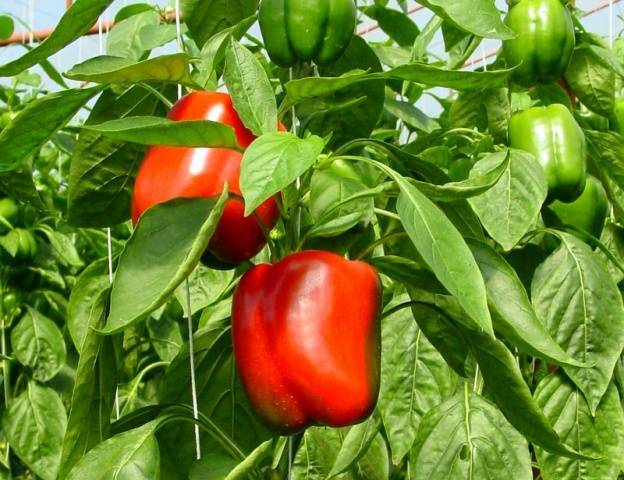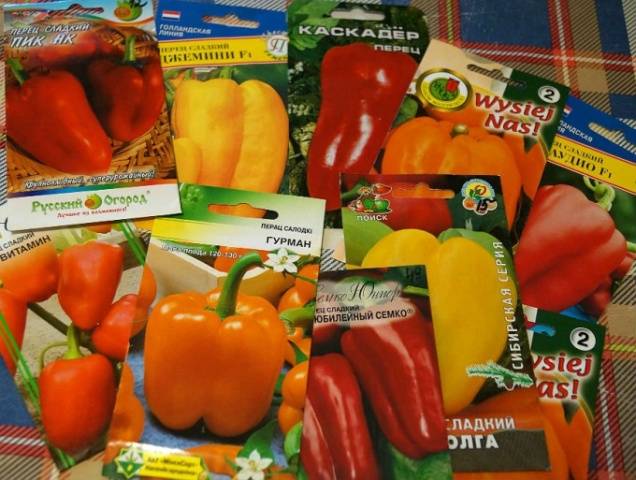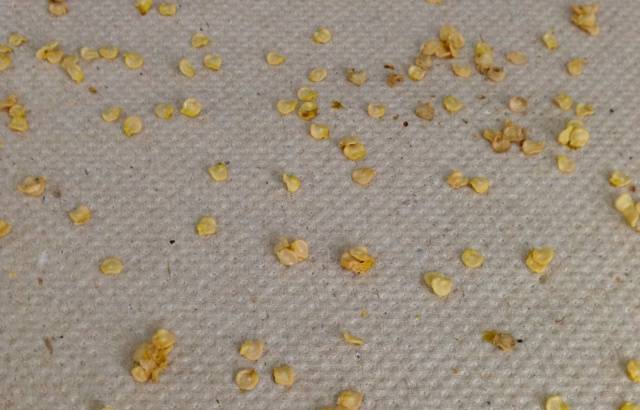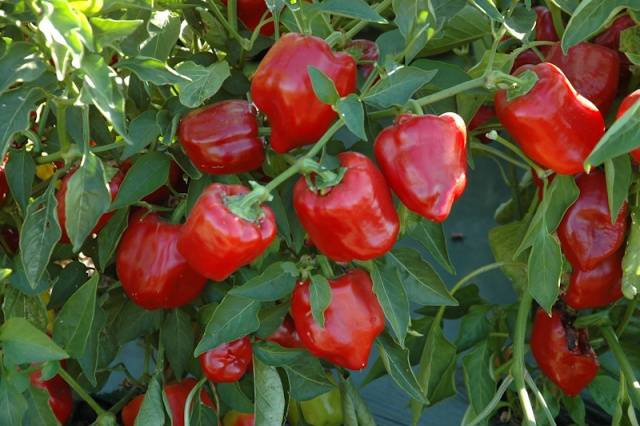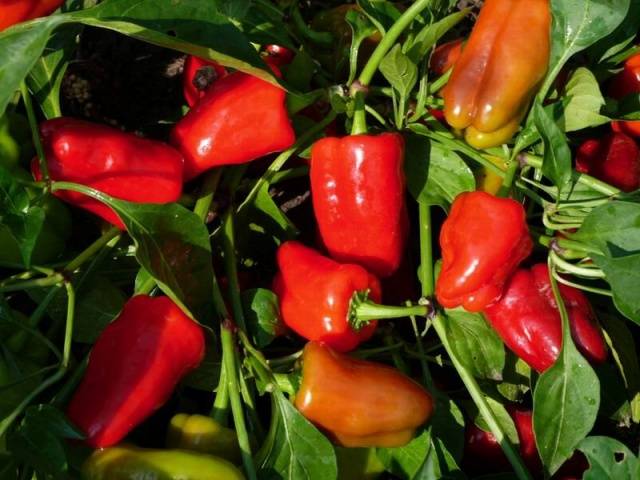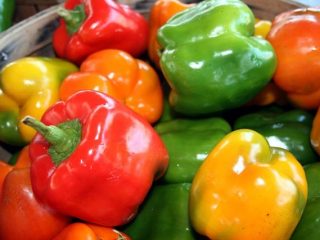Content
Until recently, sweet peppers were grown only in the southern regions. There were very few varieties on the shelves. However, today everything has changed dramatically. Coming to the store to buy sweet pepper seeds, the buyer’s eyes widen at the variety of varieties and hybrids. In the picture they all look equally attractive, but this is a marketing ploy. What should we really expect, and what varieties should we choose for open ground?
Growing sweet peppers in open ground
Pepper comes from Central America, which means that this crop is extremely heat-loving. Biologically, the crop is called capsicum, which is divided into two types:
- sweet (we’ll talk about him today);
- bitter.
All varieties of bitter contain the substance capsaicin, which gives the pepper its piquant taste. All sweet peppers are sometimes called bell peppers. This is not important; there are a lot of varieties and hybrids. And if today there are not many hot peppers on the shelves, there are plenty of sweet varieties.
It is not possible to grow the latter type in open ground everywhere in Russia.The fact is that the growing season of pepper is quite long, and summer in most regions of our country is short. It is for this reason that they prefer to grow seedlings at home, and then plant the plants in open ground. This method is considered the most preferable. For central Russia, it is better to give preference to early varieties. They are also great for warm regions. Let's talk about which varieties are preferable at the moment.
The best early varieties for open ground
To choose the best variety, you need to determine the qualities that are important to you specifically. As a rule, the following are important for every gardener or summer resident:
- maturation period;
- productivity;
- resistance to viruses, diseases and low temperatures;
- taste qualities.
Disease resistance can only be achieved by choosing hybrids. Experienced gardeners have long understood this, which is why, according to statistics, about 80% of hybrids are sold on the market today. However, the varieties also grow well.
Let's talk about early and early ripening varieties of sweet peppers that can be grown in open ground. To do this, here is a list of varieties and hybrids:
- hybrid "Pinocchio";
- hybrid "Mercury";
- variety "Health";
- variety "Bogdan";
- variety "Vesper";
- variety “Firstborn of Siberia”;
- variety “Fleshy 7”;
- variety "Ivanhoe";
- variety "Annushka";
- hybrid "Maria";
- variety "Barin";
- variety "Alyosha Popovich";
- variety "Junga";
- hybrid "Blondie";
- hybrid "Lilak Bell";
- variety "Victoria";
- variety "Bogatyr".
Early ripening varieties a lot for open ground. Let's compare these in a special table. According to the basic data, it will be easy to understand which one is more suitable for growing in your region.
comparison table
Below is a table with data for each hybrid or variety above in the list. Let us touch only on the basic qualities that are important for every gardener. All varieties are tasty, juicy, and belong to the sweet type.
| Name of variety/hybrid | Maturation in days | Resistance to viruses and diseases | Description | Productivity, in kilograms per 1 square meter |
|---|---|---|---|---|
| Ivanhoe | early ripening, 125-135 depending on thermal conditions | cold-resistant, resistant to many diseases | the bush is medium-sized, the fruits are also medium-sized | 6 (in open ground), in greenhouse above |
| Alesha Popovich | early, 120-125 | to wither | medium-sized pepper with a thin wall, medium-height bush, openwork | 4,6 |
| Annushka | early, 105-117 | to TMV and major diseases | medium sized peppers are very juicy | 7 |
| Master | early ripening, 120 | to verticillium wilt, tobacco mosaic virus | can be planted quite densely, up to 10 plants per square meter | 8-10 |
| Blondie | early ripening, ripening period only 60 days | to major diseases | The peppers are strong, quite large, reaching 200 grams | 5-7 |
| Bogdan | early ripening, 97-100 | tolerates minor drought, disease resistant | large bright yellow peppers | to 10 |
| Bogatyr | mid-season, up to 135 | resistant to cold and wilting | green or red fruits are medium, the plant is powerful, tall | 3-7 |
| Pinocchio | ultra early ripening, 88-100 | resistant to major viruses and diseases | elongated red peppers, spreading plant, tall | 7-10 |
| Vesper | early ripening, 108 | the tobacco mosaic virus and some diseases are not scary | the fruits are small, elongated, the bush is almost not overgrown with foliage | 5,5-7 |
| Health | ultra early ripening, 78-87 | to apical rot, tolerates absence of sun for a long period | the plant is tall, it will need to be tied up, small peppers are very tasty | 4-5 |
| Mercury | ultra early ripening, 89-100 | to blossom end rot and tobacco mosaic virus | a hybrid with large fruits, a tall bush, so it definitely needs a garter | 7-8 |
| Thick 7 | early ripening, 140 | to tobacco mosaic virus and major diseases | small juicy pyramidal peppers | 10-14 |
| Firstborn of Siberia | early ripening, up to 120 maximum | resistant to tobacco mosaic, blossom end rot | the fruits are small in size, the plant itself is also small, but produces a large harvest | 9-12 |
| cabin boy | early, 105-115 | to bad weather, some diseases | the bush is quite low, the peppers are medium cone-shaped | 8-10 |
| Lilac Bell | ultra early ripening, 60-65 | disease-resistant | the fruits are medium-sized with a very thick wall, the plant bears fruit well | 9-10 |
| Victoria | early, 115 | to black mold and lower air temperatures | the fruits are small but very tasty; this variety is loved for its resistance to weather changes | 5-7 |
| Maria | early, 103 | The hybrid is not afraid of major diseases | The bush is compact, gives a rich harvest | 4-7 |
Most often they pay attention to yield and taste. pepper varieties. Its main purpose is to use it fresh, as well as for canning. That is why not only the color of the fruit is so important, but also its aroma.
Several more varieties are presented in our video.
Residents of the Urals and Siberia should pay special attention to ultra-early ripening varieties, they are the earliest. They ripen after two months, if you count from the first shoots.
All varieties listed in the table can be safely grown in open ground, if weather conditions permit. Below we’ll talk about the most common method of growing – seedlings.It is advisable to use it both in the middle zone and in the south of the country.
Seed selection
Today, few people prepare seeds on their own; saving time, summer residents prefer to buy ready-made seed in bags. This is very convenient, one package is enough for a fairly large area of the garden, the seeds go through a pre-sowing disinfection stage, which has a beneficial effect on the yield.
Large fruits, as a rule, appear in mid-ripening and late-ripening pepper varieties, they reach a weight of 240 and 300 grams, the bush is always tall, but in central Russia it is problematic to grow them, since the summer is short and there is quite a bit of sun.
As for the difference between varieties and hybrids, it is very important to understand the following:
- adult hybrids are indeed more persistent and give good results in the form of a rich harvest;
- the yield of varietal peppers is often lower, but at the same time in the growth stage they are not as capricious as hybrids;
- everything that is indicated on the packaging in the context of agrotechnical features must be followed, otherwise you risk being left without a harvest.
Tips for choosing sweet pepper seeds are presented in the video. They will allow you to understand many of the nuances of planting peppers in open ground in central Russia. It is in these regions that the most difficulties arise with growing early varieties of pepper.
Growing early varieties of sweet peppers
As mentioned above, sweet peppers are a rather demanding crop. It grows wild in the tropics and subtropics. Agree, our weather conditions are completely different throughout most of the country.
For those who are just starting to grow sweet peppers, we can advise you not to pay attention to the colorful photos on packages of seeds.Today there are fruits with interesting colors, for example, black, purple, orange. All of them can turn out to be capricious, and a bad experience can spoil the overall impression of growing a crop.
At the very first stage, preference is given to traditional varieties, for example, “Ivanhoe” or “Bogatyr”.
Growing Requirements
Compliance with all requirements is not the desire of the seed manufacturer, but the harsh conditions in which a heat-loving crop must be grown. So, sweet pepper loves:
- illumination 12 hours a day (especially at the seedling growth stage);
- heat (it is advisable to set the temperature at +22-32 degrees);
- warmed soil (+12-15 degrees, no less);
- watering with warm water and spraying;
- protection from drafts;
- soil looseness and moderate acidity;
- feeding with fertilizers.
Growing sweet peppers in open ground can be compared to growing tomatoes. Cultures are very similar in this regard. So, let's divide the growing process into several stages:
- pre-sowing preparation of seeds;
- growing seedlings;
- transplanting finished seedlings into open ground;
- caring for adult plants.
Let's move on to the first stage and describe it in as much detail as possible.
Pre-sowing seed preparation
Early varieties of pepper for open ground are chosen in winter. The period of planting seeds depends on the ripening period of the fruit. A gardener should know when the danger of frost in his region will pass and it will be possible to plant seedlings in open ground. The growth period of pepper is quite long. For example, those varieties that ripen in 105-110 days spend 60-80 days on windowsills.During this time they stretch out and get stronger.
Pepper seeds undergo pre-sowing preparation. It is necessary in order to accelerate the germination of seed. The soil for future seedlings is also prepared in advance.
Pepper seeds are medium-sized, usually golden in color and round. They are poured out of the bag onto a paper base and examined. If there is an obvious defect among the material (cracked seeds, opened, not fully formed), you can immediately throw them away.
The rest are placed in very warm water (+50 degrees) and kept in it for at least 5 hours. From time to time, the water is drained and replaced with new water to keep the environment warm. After this time, the seeds are placed in a damp cloth and left for 2-3 days. After this, they will hatch in the ground within 24-48 hours. If this is not done, seedlings will appear after a week or more.
Growing seedlings
For seedlings, you can use two types of soil, however, you will have to take into account the soil requirements of the crop:
- it should be loose;
- it should be moderately sour (6.0-7.0);
- the soil should be rich in organic matter.
Peppers will not grow in heavy soils. This is also taken into account when transplanting plants into open ground.
So, you need to choose one of two soils:
- self-cooked;
- store-bought quality.
A bad mixture will have a negative effect on the seedlings. You can prepare the mixture yourself in this way: take a bucket of humus, add sand and soil to it in a ratio of 2:1:1. It’s good to add a glass of ash, pour everything with a liter or two of water and boil. Plant seeds in warm soil.
Since sweet pepper seedlings take a long time to grow, many gardeners plant them either in random order or in separate cups.
Pepper seedlings grow well at +25-27 degrees; at night they can be transferred to a cooler place, hardening them off. Avoid drafts. Watering is carried out only with water at room temperature. You should not allow the soil to dry out, but you also do not need to fill it, otherwise the “black leg” will damage fragile plants.
Transplanting finished seedlings into open ground
Transplanting seedlings into open ground can be done when it gets warmer outside. They do this under certain conditions. There is no need to rush to transfer:
- it may even bloom;
- seedlings should reach 20 centimeters in height;
- There must be at least 10 leaves.
For transplantation, choose a warm, but not hot day. The best time to plant peppers is after lunch. If there are single flowers on the seedlings, they can be removed. Overgrown peppers will hurt for a long time in open ground.
When transplanting, proceed with caution: the seedlings are removed from the cup and placed in the prepared hole. There is no need to press the plant with force. The root system of pepper is very delicate.
The planting location is the southern part of the garden, protected from the wind on all sides.
The planting pattern is determined by the requirements, which can be studied on the packaging. That’s why it’s so important not to throw it away, but to sign the seedlings.
Before planting, the soil is dug up, and a disinfecting solution of copper sulfate is added a week in advance (one tablespoon of the substance per bucket). In the fall, organic matter is added to the beds. You cannot grow peppers in the beds where you planted:
- eggplant;
- potato;
- tomatoes.
Can be planted after cucumbers, zucchini, and squash. Seedlings cannot be buried. Moreover, the less mild the climate in your region, the higher the bed should be.
Caring for mature plants
All care comes down to:
- loosening the soil;
- timely watering;
- I add fertilizer.
Watering is carried out as the soil dries. At the same time, drought cannot be created. From time to time, if there is very little rain, the plants are watered from a watering can from above, as if washing the foliage. Loosening should be done regularly, but carefully so as not to damage the root system.
As for fertilizing, it is a good idea to apply them twice or thrice per season. Pepper loves phosphorus, potassium and nitrogen (except potassium chloride).
The feeding scheme is as follows:
- the first is carried out 10-14 days after planting seedlings in open ground;
- the second - after the formation of ovaries;
- the third - two weeks after the second.
This is the optimal scheme. Sweet peppers will react very actively to such feeding.
Conclusion
If you follow all the rules, early varieties of pepper will give a bountiful harvest. Watering and fertilizing will have a beneficial effect on the taste of sweet fruits. There is nothing difficult about growing them.


